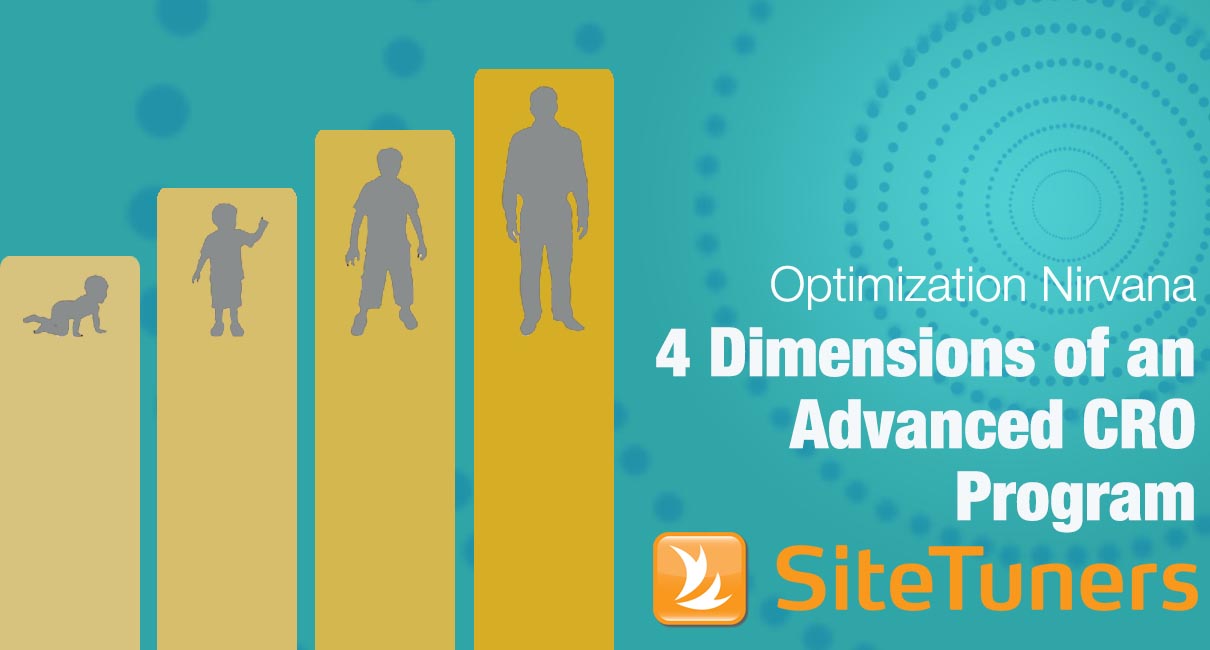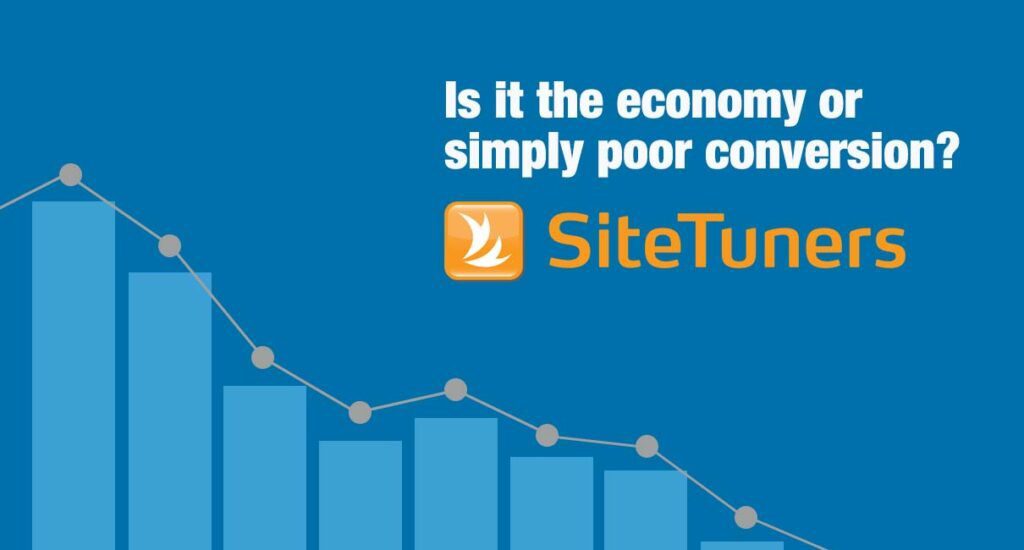 A lot of people make the mistake of thinking that conversion rate optimization (CRO) equals testing, and that advanced testing tools equate to advanced CRO. Conversion rate optimization is not just testing, however. Testing is just part of the technology and tools you use in a conversion rate optimization program.
A lot of people make the mistake of thinking that conversion rate optimization (CRO) equals testing, and that advanced testing tools equate to advanced CRO. Conversion rate optimization is not just testing, however. Testing is just part of the technology and tools you use in a conversion rate optimization program.
In examining how well your company’s CRO efforts are faring, you need to look at three other dimensions: people and structure, measurement and accountability, and process and culture.
Here’s what those dimensions are like on the advanced stage and what you should be setting your eyes on:
1. People and Structure
-
- There is a formal stand-alone CRO team with full-time positions and a manager which report to the CMO (or higher)
-
- CRO team sets strategic priorities company-wide via a formal intake process
People in the company ask the CRO team to do their projects and fix their parts of the website, and the CRO team prioritizes the projects based on what’s going to have the highest impact. The team is allowed to bring a wrecking ball to do whatever is necessary.
-
- CRO team members have regular formal training in CRO
-
- CRO team regularly conducts informal training for a wider internal audience
It does not have to be the same level of training for everyone, but the CRO team should be spreading the knowledge within the company.
-
- Marketing focus is on increasing profits over the lifetime of the customer
The company cares about, and hence, measures the lifetime value of client relationship, so it can be improved. A prerequisite to this is understanding what turning certain knobs on the front-end of the site experience ultimately does to the bottom line, as this is what the management team cares about (e.g. percentage of phone calls or form fills that go to free trial, percentage of free trials that the sales team upsells into clients, and the length of time clients stay with the company).
-
- Almost all website content and structural changes can be made without IT involvement
In CRO, cycle times win. It is a problem when there’s anybody in the middle of the process. Marketers are lucky because there are now testing tools for most parts of the site that can be used to visually drag and drop things, swap them out, and put alternative versions of the content and decide which segments to show them to. Marketers should be able to do this site wide without IT’s help. There are companies who know that there’s something wrong with their checkout process, for example, but can’t change it because it will involve a complete system rewrite .
-
- Most parts of the main website are under the control of online marketing
2. Tools and Technology
-
- All websites are in commercial content management systems (CMS) and integrated with customer relationship management (CRM), marketing automation, and traffic acquisition
You’re changing your bids in real-time based on the time of day, day of week, and the traffic sources, for example.
-
- Technology platforms are standardized across divisions
-
- Wide variety of qualitative and quantitative diagnostic tools are used company-wide
-
- Split and multivariate testing tools are used routinely company-wide
-
- Real-time content changes are made on an individual visitor basis using predictive analytics, behavioral targeting, and lead scoring
You’re doing real-time data append and are changing content on the fly to the individual level. In a consumer-facing business, you can append 60 data points to a visitor coming your website (i.e. demographics, psychographics, geography), and then change the site behavior in real time. You can do some of this with your testing tools, then use companies like Conversion Sciences or Evergage that can overlay on top of your CMS for automatic detection of what to do next and change things on the fly. You’ll see a 500-1000% increase in conversions when you hyper-target people.
-
- Winning versions of tests are automatically deployed (and back-tested on a continual basis to ensure sustainable improvements)
It is ideal to back test and keep a small percentage of your traffic running through your testing system to make sure you don’t find some behavior changes over time. It’s not a matter of testing new ideas; some of your old ideas might be the answer, so keep them in the mix.
-
- All web-facing experiences are easily reconfigurable and can be rapidly tested
3. Measurement and Accountability
-
- Reporting of key metrics is done via near-real-time-dashboards
-
- Automatic alerts and corrective measures are triggered if key metrics are out of line
For example, for pay per click (PPC) bid management tools, if the cost per acquisition (CPA) is too high, bids are automatically lowered.
-
- There is an understanding and a tolerance for negative test outcomes
A company with advanced measurement understands that failure is part of learning.
-
- Web analytics team’s main focus is developing predictive analytics models and deploying them in the form of website business rules and triggers to change the site experience on an individual basis
There should be real-time individual customization in your website content, not small sub-segment customization. This means that no two people may have the same website experience.
-
- There are no fixed marketing budgets and spending is quickly reprioritized depending on the current mix and profitability of acquisition activities
Everything is always up for renegotiation or redeployment to make sure you’re making the maximum ROI possible.
-
- There is a culture of measurement within all departments and operating divisions of the company ( not just inside the CRO group)
4. Process and Culture
-
- There are ongoing and largely automated processes for tactical split testing and implementing permanent changes based on winning test versions
-
- Marketing is driven exclusively by high-impact CRO activities which are prioritized via a structured submission and evaluation process
-
- All operating divisions have compensation tied to improvements in online efficiencies
-
- There is universal executive management awareness of CRO, and active support for all projects initiated by the CRO group
-
- There is solid cooperation among all departments
-
- Web visitor behavior and the results of CRO activities are actively and systematically fed back to marketing to create new value propositions and product offerings.
Your company’s conversion rate optimization program can be categorized as unoptimized, basic, intermediate, or advanced in each of these dimensions. Not all dimensions will be at the same stage, but you should be pushing to get to the advanced level.
Learn which stage your company is at for each dimension. SiteTuners CEO Tim Ash explains the four dimensions and the stages in the video below.
Work with the best!Kickstart your optimization with a 90-minute Website Review from the pioneers in conversion rate optimization. Our CRO experts at SiteTuners can help diagnose your website from a conversion and usability perspective. |


